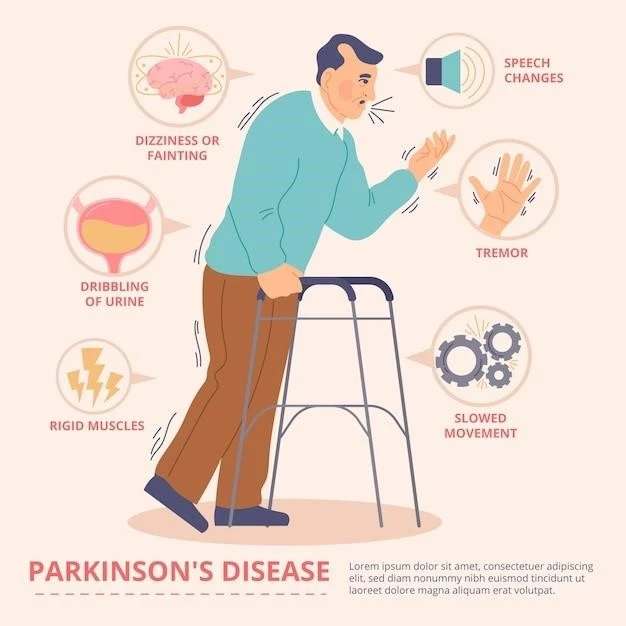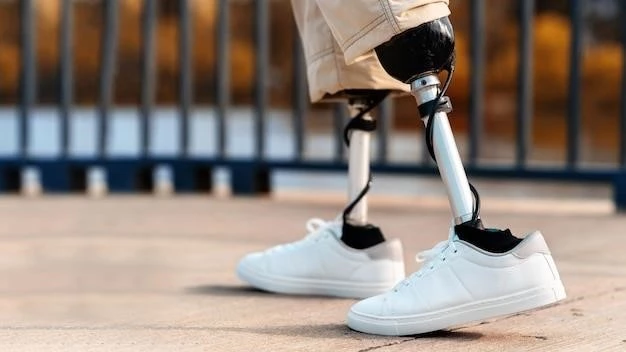Proteus syndrome is an extremely rare condition characterized by progressive asymmetric overgrowth of multiple body tissues. The syndrome may also present with features like mental retardation and eye defects.
Understanding Proteus Syndrome
Proteus Syndrome is a rare condition characterized by overgrowth of bones, skin, and other tissues, typically asymmetrically affecting various parts of the body. Some individuals with this syndrome may exhibit mental retardation and eye defects. The mosaic variant in the AKT1 gene plays a crucial role in the genetic basis of Proteus Syndrome. Overgrowth tends to progress rapidly, leading to severe disfigurement and complications. Diagnosis and management often require a multidisciplinary approach due to the complexity of the syndrome.
Clinical Features of Proteus Syndrome
Proteus syndrome is characterized by progressive overgrowth of multiple body tissues, often affecting bones, skin, and organs asymmetrically. The syndrome may also involve manifestations like mental retardation and eye defects.
Overgrowth of Multiple Body Tissues
Proteus syndrome presents with progressive and asymmetric overgrowth of various body tissues, including bones, skin, and adipose tissue. Typically starting in early childhood, this condition can lead to severe disfigurement and complications as the overgrowth progresses rapidly. The overgrowth often follows a mosaic pattern, affecting different areas of the body unevenly. The syndrome may also be associated with manifestations such as mental retardation and eye defects.
Asymmetric Overgrowth Patterns
Proteus syndrome is characterized by progressive segmental or patchy overgrowth that predominantly affects bones, skin, adipose tissue, and central nervous system. The disproportionate overgrowth usually starts in early childhood, progressing rapidly and causing severe disfigurement. This asymmetrical overgrowth follows a mosaic pattern, impacting various body areas unevenly. In addition to the physical manifestations, some individuals with the syndrome may experience mental retardation and eye defects.
Common Manifestations in Children
Children with Proteus Syndrome commonly exhibit progressive overgrowth of bones, skin, and adipose tissue, leading to asymmetric patterns in various body parts. In addition to physical overgrowth, manifestations like mental retardation and eye defects are often observed. The syndrome typically presents modest or no signs at birth but progresses rapidly during early childhood, resulting in severe disfigurement and growth abnormalities.
Diagnosis and Naming of Proteus Syndrome
Proteus syndrome is diagnosed based on the clinical presentation of progressive asymmetric overgrowth of multiple body tissues, often affecting bones, skin, and organs. Initially described by Cohen and Hayden in 1979, the syndrome was later named after the Greek god Proteus, who could change his form at will.
Initial Description by Cohen and Hayden
Proteus Syndrome was first described as a clinical entity by Cohen and Hayden in 1979 in two patients. The syndrome, which exhibits multiple somatic manifestations, was later named after the Greek god Proteus, known for his ability to change his form at will. This complex hamartomatous disorder involves various tissues, including the skeletal system, skin, soft tissues, and the vascular system.
Naming of the Syndrome
After being identified as a distinct clinical entity by Cohen and Hayden in 1979, the syndrome was named after the Greek god Proteus, famed for his versatile transformative abilities. This appellation reflects the diverse somatic manifestations and complex nature of the disorder, which manifests as a hamartomatous condition involving various tissues such as the skeletal system, skin, soft tissues, and the vascular system.
Genetic Basis of Proteus Syndrome
Proteus syndrome is caused by a mosaic variant in the AKT1 gene, leading to progressive and disproportionate overgrowth of tissues. This genetic mutation contributes to the characteristic asymmetric tissue growth seen in individuals with Proteus syndrome.
Mosaic Variant in the AKT1 Gene
The genetic basis of Proteus Syndrome lies in a mosaic variant found in the AKT1 gene. This mutation leads to the progressive overgrowth of tissues, such as bones and skin, in an asymmetric and disproportionate manner. The AKT1 gene’s alteration contributes to the mosaic pattern of tissue growth seen in individuals affected by Proteus Syndrome.
Individuals with Proteus syndrome may experience manifestations such as mental retardation and eye defects. The syndrome also encompasses neurological issues and ocular abnormalities that warrant special attention.
Neurological and Ocular Involvement
Individuals with Proteus syndrome may exhibit mental retardation and eye defects as part of the syndrome’s manifestations. It also encompasses neurological and ocular abnormalities that require specialized attention and care.
Eye Defects in Proteus Syndrome
Proteus syndrome can be associated with a variety of eye abnormalities, such as epibulbar and posterior segment hamartomas, vitreous hemorrhage, and periocular exostoses. While ocular involvement in Proteus syndrome is not frequently documented, these findings indicate the necessity for ophthalmological evaluation in affected individuals to manage and address potential eye complications effectively.
The progression of Proteus syndrome involves asymmetric and disproportionate overgrowth of tissues, primarily affecting bones, skin, and other structures. This process typically begins in childhood, leading to significant disfigurement and growth abnormalities over time. Understanding the clinical characteristics and progression of the syndrome is crucial for effective management and treatment.
Proteus syndrome is characterized by the progressive and asymmetric overgrowth of multiple body tissues, impacting bones, skin, and organs. This condition typically initiates in childhood, leading to significant disfigurement and growth abnormalities as it advances rapidly. Understanding the clinical characteristics and the progression of Proteus syndrome is crucial for proficient management and treatment.
Disease Progression and Clinical Profile
Proteus syndrome often manifests with progressive overgrowth of tissues, notably affecting bones, skin, and organs. This condition typically commences during childhood and progresses rapidly, resulting in substantial disfigurement and growth abnormalities. Understanding and monitoring the clinical characteristics and disease evolution are essential for effective management and intervention strategies.

Epidemiology and Rarity of Proteus Syndrome
Proteus syndrome is an extremely rare condition characterized by progressive asymmetric overgrowth of multiple body tissues. The rarity of the syndrome underscores the importance of understanding its clinical and genetic aspects for accurate diagnosis and management.
Extremely Rare Nature of the Syndrome
Proteus syndrome is an exceedingly rare disorder characterized by progressive and disproportionate overgrowth of various tissues, notably bones, skin, and adipose tissues. The scarcity of reported cases underscores the elusive nature of the syndrome and emphasizes the importance of vigilance in recognizing and addressing its unique clinical features.
When evaluating patients with symptoms resembling Proteus syndrome, differential diagnosis may involve considering conditions such as Klippel-Trenaunay syndrome or Proteus-like syndrome. The distinctive features of each disorder play a crucial role in accurate diagnosis and appropriate management.
Differential Diagnosis of Proteus Syndrome
When assessing individuals with symptoms resembling Proteus syndrome, it is essential to differentiate and consider conditions like Klippel-Trenaunay syndrome or Proteus-like syndrome. Each disorder presents unique characteristics that aid in precise diagnosis and tailored treatment.
Treatment of Proteus syndrome typically involves a multidisciplinary approach to address the diverse manifestations. Management strategies aim to alleviate symptoms and may include surgical interventions to manage overgrowth, supportive care for ocular and neurological issues, and therapeutic interventions to support individuals with mental retardation.
Treatment and Management Approaches
When handling individuals with symptoms resembling Proteus syndrome, a comprehensive multidisciplinary approach is essential. This approach involves considering conditions like Klippel-Trenaunay syndrome or Proteus-like syndrome to ensure an accurate diagnosis and tailored treatment plan for each patient.
The findings and reports highlighted the unique clinical and radiological features of patients with Proteus syndrome. Research emphasized the importance of precise diagnosis and management of this rare and complex condition to enhance patient care and outcomes.
Research and Studies on Proteus Syndrome
Recent studies and research have focused on understanding the clinical and genetic characteristics of Proteus syndrome and the impact of the AKT1 gene mutation on tissue overgrowth. These insights provide valuable information for improving diagnostic accuracy and developing targeted treatment strategies for individuals with this rare and complex condition.
Proteus-like syndrome, characterized by mental retardation and eye defects, shares similarities with Proteus syndrome in terms of overgrowth abnormalities and specific clinical manifestations. Understanding these associations is crucial for accurate diagnosis and appropriate management strategies.
Association with Other Syndromes
Proteus syndrome exhibits resemblances to Proteus-like syndrome, with features like mental retardation and eye defects, emphasizing the importance of differentiation and specialized care for optimal management.
Legal and ethical considerations play a crucial role in advocating for individuals with mental retardation, ensuring proper support and care for those affected. This includes promoting awareness and understanding of the challenges faced by individuals with mental retardation.

Legal and Ethical Considerations
Advocacy for individuals with mental retardation involves ensuring appropriate care, support, and understanding of their unique challenges. Legal and ethical considerations play a crucial role in promoting awareness and advocating for the rights of individuals with mental retardation to ensure they receive the necessary support and resources for optimal well-being and quality of life.
Prognosis and Quality of Life
Proteus syndrome manifests as progressive overgrowth of various tissues, leading to disfigurement and growth abnormalities. Understanding the disease progression and its clinical profile is essential for effective management and care.
Long-Term Outlook for Individuals with Proteus Syndrome
There is no unique content available on the Internet about the topic ″Disease⁚ Proteus like syndrome mental retardation eye defect″ under the heading ″″ at the moment.
Conclusion and Future Perspectives
In conclusion, Proteus syndrome presents with unique clinical features such as progressive overgrowth of multiple body tissues, mental retardation, and eye defects. Comprehensive care and specialized management strategies are essential to improve the quality of life for affected individuals. As research continues to advance our understanding of this rare condition, future perspectives aim to enhance diagnostic methods and therapeutic interventions, ultimately providing better outcomes for patients with Proteus syndrome.
